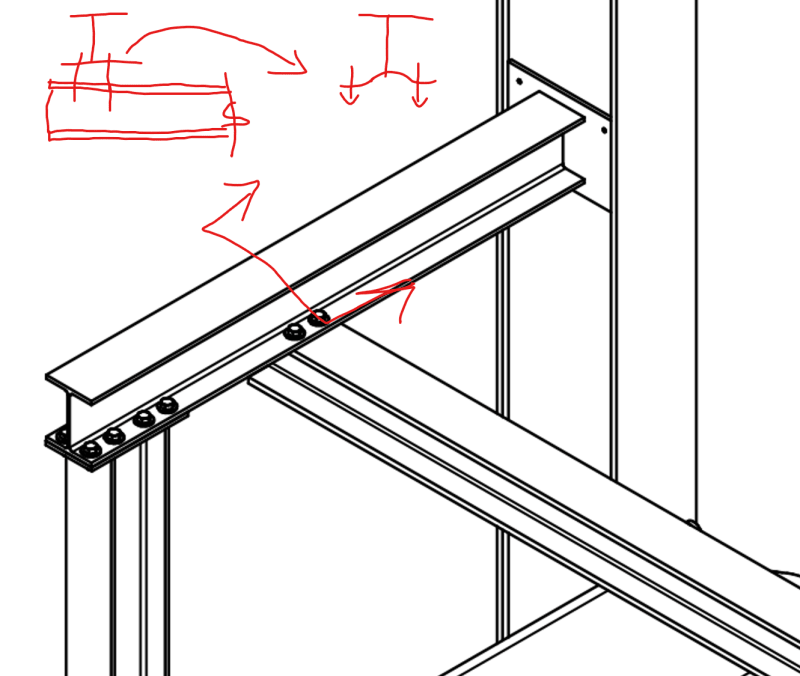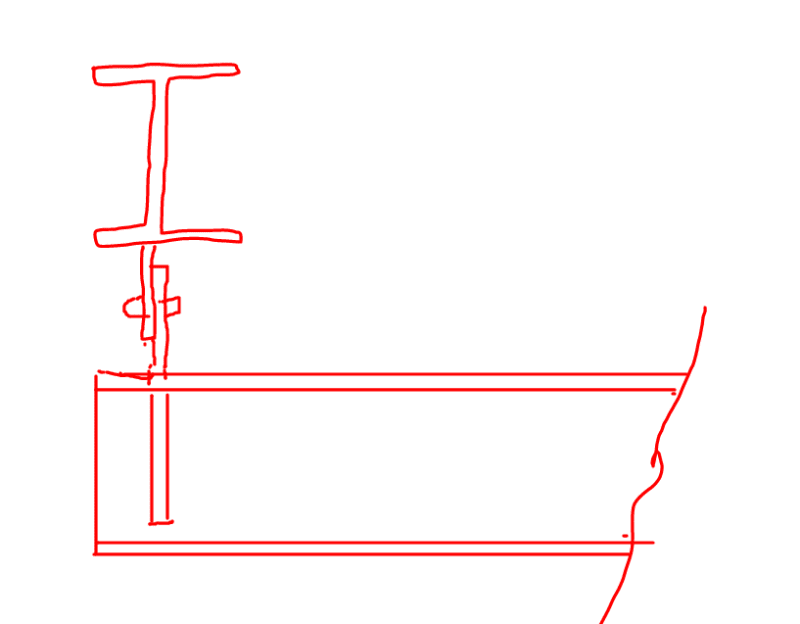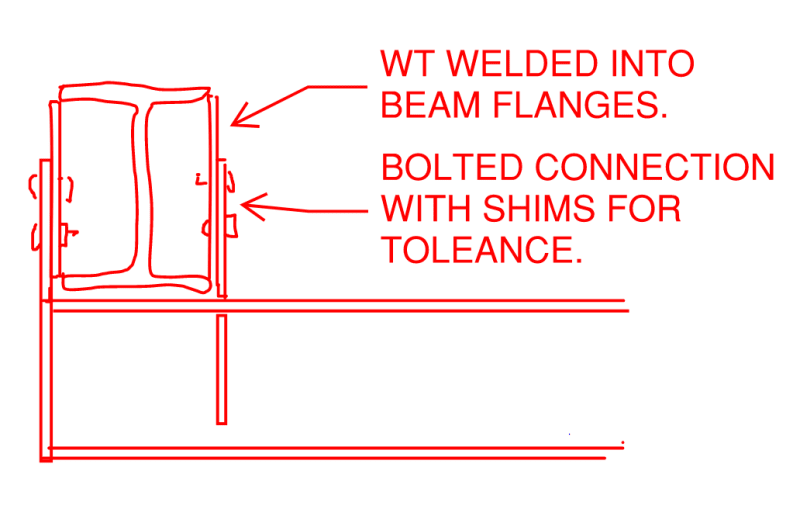human909 said:
Do you really think there is a realistic risk of fatigue in two hot rolled members bolted together like this?
I don't have a good enough feel for the numbers here to be able to comment on that with much confidence I'm afraid. My point was really that:
1) I consider it to be a fundamental tenet of good steel detailing that loads should be moved around in plate shear rather than plate flexure whenever possible.
2) When there is prying, there tends to be uncertainty about the amount of flexural stress generated within the connection. And that means uncertainty in establishing the stress ranges at play for fatigue evaluation.
So, if I'm going to use a mechanically poorer detail when mechanically better ones are available to me, I would want a good reason for that. Possible options:
3) Cost if the basic four bolt setup with it's associated,
welded stiffeners that OP mentioned is significantly cheaper.
4) Perhaps your are correct and my bolts and welds arrangement is indeed worse than OP's bolts and welds arrangement for fatigue.
As is often the case, I really enjoy kicking around alternate detailing options and discuss their merits. That's the crux of what I've done above.
OP said:
If I was going to be concerned about fatigue surely the welds would be a greater concern? (EG in the cleat shown in your first image.)
OP's solution also has structurally active welds on the stiffeners proposed.
human909 said:
Some bending of a plate in my mind isn't a terrible fatigue issue. A many moment connection light posts and similar such connections regularly have such bending plate loads.
Granted. But, then, I would say that those choices are dictated by the practical necessity of mass construction economics rather than by what is most structurally awesome. Additionally, pole bases usually sit on grout or are gapped. In both cases, you do have plate bending but you do not have prying and its associated uncertainty.



